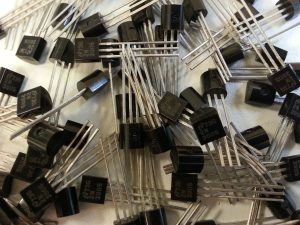Molecular Logic Arrays: Chemical Processing
Welcome to the fascinating world of Molecular Logic Arrays (MLAs) – a revolutionary technology that is transforming the landscape of chemical processing. With the rapid advances in the field of nanotechnology, MLAs are poised to play a crucial role in powering the next generation of chemical processing systems. In this article, we will take a deep dive into the world of MLAs, exploring how they work, their various applications, and the advantages they bring to the table.
The Basics of Molecular Logic Arrays (MLAs)
Before we delve into the details of how MLAs are used in chemical processing, let’s first understand what they are and how they work. Simply put, MLAs are arrays of nanoscale devices that are designed to perform logical operations at the molecular level. These devices, also known as molecular logic gates, are made up of a combination of organic and inorganic materials, allowing them to perform complex operations in a highly efficient manner.
The fundamental building block of an MLA is a molecule – the smallest unit of a chemical compound. These molecules are strategically designed to respond to specific stimuli, such as light, heat, or electrical signals, and trigger a specific reaction. By organizing these molecules in a particular pattern, MLAs can be formed, enabling the execution of more complex logic operations.
The Key Components of an MLA
An MLA comprises three main components – input molecules, logic gates, and output molecules. The input molecules are the ones that are designed to respond to specific stimuli, as mentioned earlier. These molecules are also referred to as “cues,” and can be of different types, depending on the type of reaction that is to be triggered.
The logic gates are the main units that perform the logic operations within an MLA. These gates can be designed to perform a variety of operations, such as AND, OR, or NOT, depending on the application. The output molecules, on the other hand, indicate the results of these logic operations, and are responsible for initiating the next set of reactions.
Applications of MLAs in Chemical Processing
With their ability to perform complex logical operations at the molecular level, MLAs have found widespread applications in the field of chemical processing. Here are some of the key areas where MLAs are making a significant impact:
Sensing and Detection
MLAs are being extensively used in the development of chemical sensors and detectors, enabling the real-time monitoring of chemical reactions and processes. This allows for early detection of any issues or deviations and helps in maintaining the desired process conditions.
Drug Delivery
MLAs are also being utilized in the development of targeted drug delivery systems, where the release of the drug is triggered by a specific molecular signal. This ensures that the drug is delivered only to the intended site, reducing side effects and improving effectiveness.
Wastewater Treatment
The use of MLAs in wastewater treatment is another significant application of this technology. MLAs can be designed to detect and remove specific contaminants from water, making the treatment process more efficient and cost-effective.
Process Optimization
By incorporating MLAs into chemical processing systems, it is possible to automate complex logic operations, resulting in improved process control and optimization. This not only leads to increased efficiency and cost savings but also reduces the likelihood of human errors.
The Advantages of Using MLAs in Chemical Processing
So, what makes MLAs stand out from traditional chemical processing techniques? Here are some of the key advantages of incorporating MLAs into chemical processing systems:
Efficiency
MLAs are designed to perform complex logic operations in a highly efficient manner, resulting in reduced reaction times and increased process efficiency. This is essential, especially in the case of time-sensitive processes, where even a small difference in reaction time can have a significant impact.
Customizability
Another significant advantage of MLAs is their ability to be tailored to specific applications. By choosing the right combination of input molecules, logic gates, and output molecules, it is possible to design MLAs for a variety of chemical processes, making them highly versatile.
Cost Savings
Incorporating MLAs into chemical processing systems can result in significant cost savings in the long run. By automating logic operations and reducing the need for manual interventions, MLAs can lead to increased process efficiency and savings on labor and materials.
In Conclusion
Molecular Logic Arrays are fast emerging as a game-changing technology in the world of chemical processing. With their ability to perform complex logical operations at the molecular level, MLAs are enabling the development of highly efficient and versatile chemical processes. As technology continues to evolve, we can expect MLAs to play an even greater role in shaping the future of chemical processing systems.
So, are you ready to embrace the power of MLAs and take your chemical processing operations to the next level? It’s time to explore the possibilities and unlock the true potential of this groundbreaking technology.










